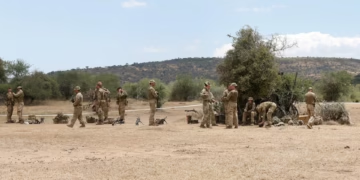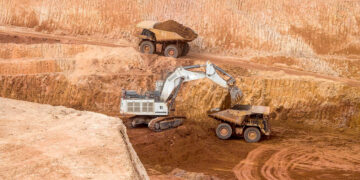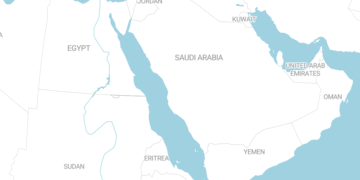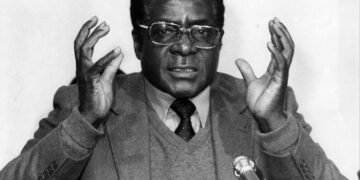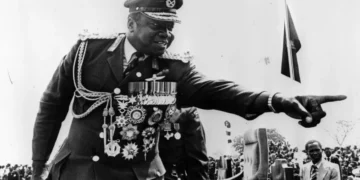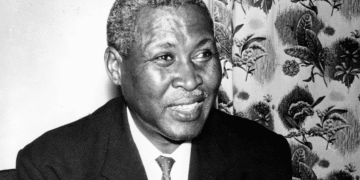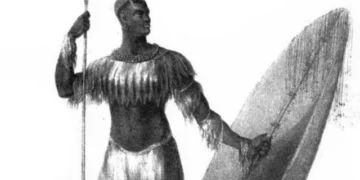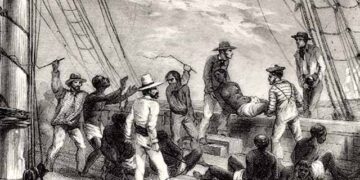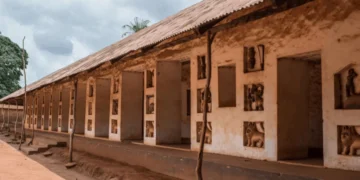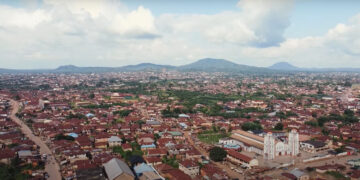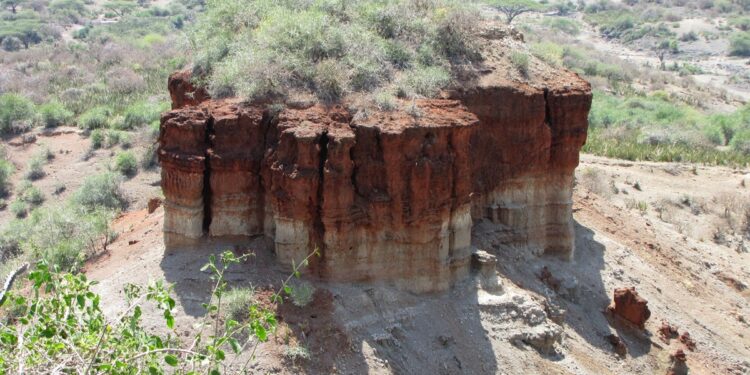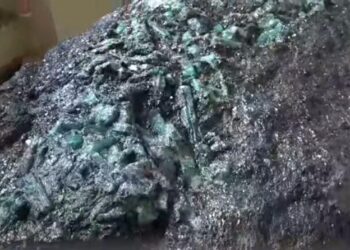The Olduvai Gorge is located within the vast plain of the Ngorongoro Conservation Area in northern Tanzania. It is one of the world’s most significant archaeological and paleoanthropological sites. It’s a rich repository of human and animal fossil remains and also a unique geological record documenting a significant portion of human evolutionary history spanning millions of years.
The Olduvai Gorge is a deep, sinuous cleft in the East African savanna plains, approximately 48 kilometers long and 100 meters deep. The gorge was formed as a result of tectonic activity and water erosion, which exposed accumulated sedimentary layers dating back to the Pleistocene era.
The stratigraphic sequence at Olduvai is exceptional, representing a nearly continuous chronological record. Scientists, most notably Mary Leakey, have divided this sequence into five main units known as Beds, ranging in age from approximately 2.1 million years ago to 15,000 years ago, providing a precise timeframe for dating finds that Bed I, the oldest, dating from 2.1 to 1.7 million years ago, is of great importance because it contains Olduvai stone tools and remains of the earliest known hominins at the site, such as Homo habilis and Paranthropus boisei.
Bed II, extending from 1.7 to 1.2 million years ago, shows a transition in tool use, with more complex and diverse technologies emerging, including the beginnings of some Acheulean tools. The Third Dynasty (Bed III) is believed to have formed during a period of severe drought, and the abundance of archaeological remains is less abundant than the previous two dynasties. The Fourth Dynasty (Bed IV) dates back to approximately 800,000 to 400,000 years ago. It is characterized by the widespread presence of large Acheulean tools, especially hand axes, often associated with Homo erectus or similar hominins. The Fifth Dynasty (Bed V), a relatively newer stratum, encompasses the Middle and Late Stone Ages and displays a diversity of tools and material culture.
This clear and precisely dated stratification (via potassium-argon and argon-argon dating of volcanic layers) has provided a clear evolutionary sequence for tools and human species.

Serious exploration of Olduvai began in the early 20th century, but it gained international fame with the work of Louis and Mary Leakey, who devoted decades of their lives to excavating the site. One of the earliest and most controversial discoveries, in 1959, was the skull of “Nutcracker Man,” or Zinjanthropus boisei, later reclassified as Paranthropus boisei. This 1.75-million-year-old skull featured a massive jaw and large teeth, suggesting a hard-shelled diet. Although not a direct ancestor of modern humans, the discovery of this skull was a turning point, providing conclusive evidence that several different hominin species coexisted in the same region and time.
The most influential discovery came in the early 1960s, when Leakey and his team found more precise fossil remains that marked the beginning of the genus Homo. This creature was named Homo habilis, or “handy man.” Homo habilis, which lived between 2.1 and 1.5 million years ago, is believed to have been the first to regularly make stone tools. This species had a relatively larger brain size compared to Paranthropus and Australopithecus. The discovery of Homo habilis in Bed I alongside Olduvai tools reinforced the idea that toolmaking was a key feature of the human genus.
In the upper layers, sophisticated tools and hominin remains believed to belong to Homo erectus (Homo erectus) appeared. This species, associated with the advanced Acheulean industry, represents an important stage in human migration, as it is believed to have been the first to leave Africa. Discoveries at Olduvai indicate the use of fire by this species and the development of more efficient hunting techniques.
Olduvai is not only significant for its fossils but also for the vast number of stone tools found, which document the technological development of early humans.
This is the oldest known stone technology, named after the gorge. This craft is characterized by simplicity, relying on crushing pebbles to produce a single, sharp cutting edge. These tools were primarily used for cutting meat, scraping hides, and breaking bones to access the marrow. The Olduvai tool assemblages at Olduvai are compelling evidence of the increasing cognitive ability of hominins.
In later layers, the Acheulean industry gradually replaced the Olduvai. This industry is characterized by the production of specific shaped tools, most notably the double-sided handaxe. Acheulean toolmaking required more complex planning and execution, indicating a further development in cognitive abilities. This development is often attributed to Homo erectus.
Research at Olduvai has helped understand the environment in which hominins lived. The study of animal and plant remains (paleoecology) indicates that the area consisted mostly of grassy plains and shallow lakes, significantly different from the arid savanna environment of today.
The site also provided crucial evidence of early human behavior. Mary Leakey’s discovery of what she called “living floors”—small, defined areas where stone tools and butchered animal remains were concentrated—suggested that hominins lived in communities and brought resources to central locations. This idea generated considerable controversy, but it opened the door to in-depth studies of the organization of early societies.
Marks on animal bones show that early humans used tools to butcher meat. The nature of their meat procurement remains a matter of debate: Were they active hunters or scavengers? Evidence at Olduvai suggests the importance of opportunism in early times.
Despite its established importance, research at Olduvai faces ongoing challenges. The ongoing erosion that exposed the gorge in the first place threatens the preservation of the exposed remains. The interpretation of field data, particularly the nature of behavioral associations between tools and hominin species, remains a subject of intense scientific debate.
Nevertheless, Olduvai Gorge remains a living laboratory of human history. It is not just an archaeological site; it is a geological document that captures the gradual transition from Australopithecus to Homo and demonstrates how the ability to make tools altered the course of human evolution. Researchers’ continued commitment to exploring and analyzing the Olduvai layers ensures that this “cradle of humanity” will continue to reveal the secrets of our earliest existence.







